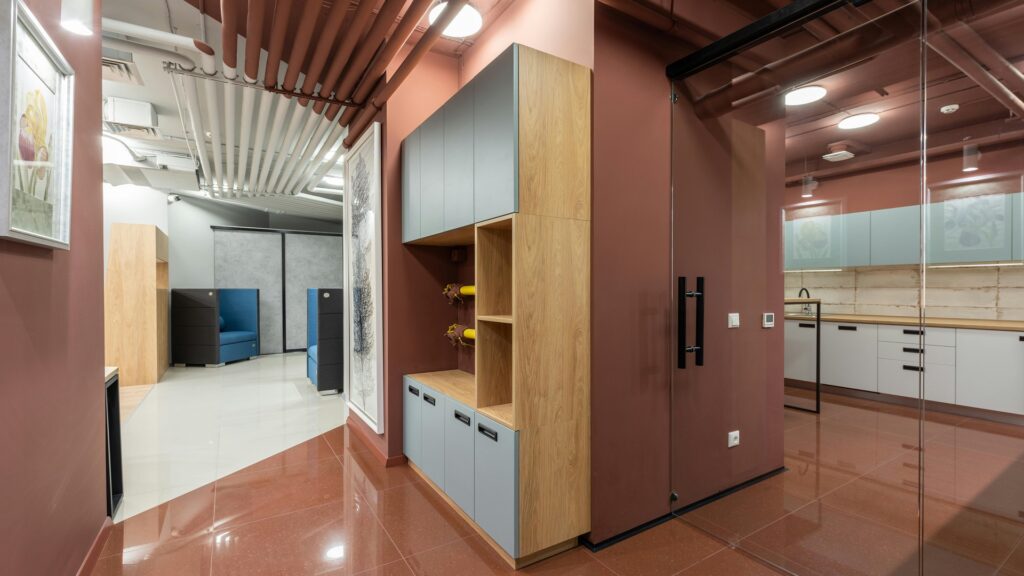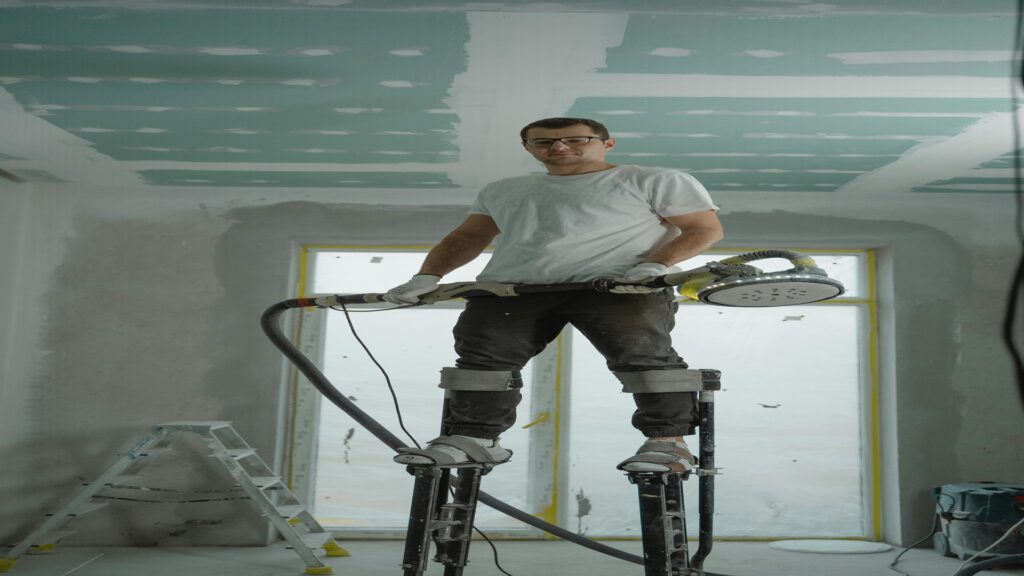Introduction Of The Ceiling Tiles
are an often-overlooked but crucial part of the architecture and design in many buildings. Whether it’s in your home, office, or a commercial space, play an important role in aesthetics, sound management, and even energy efficiency. If you’ve ever wondered why some spaces have a smooth, polished while others have a grid system with tiles, you’ve come to the right place. In this guide, we’ll explore the fascinating world of , dive into different types of ceiling systems, installation methods, and more to Ceiling Tiles.
We’ll also touch on how these tiles can affect the acoustics, insulation, and overall design of a room. Whether you’re looking to update your space or simply curious about ceiling design, this eBook will give you the knowledge you need in an easy-to-understand and fun way.
The Basics of Ceiling Tiles
Before we dive into specific types and uses, let’s start by understanding the basic concept of ceiling tiles. These tiles are lightweight panels used to cover the overhead structure of a room. They come in many sizes, styles, and materials, each designed to address different needs—whether it’s for soundproofing, style, or durability.

Acoustic Panels and Soundproofing Tiles
Ever walked into a room and noticed how the sound echoes off the walls and ceiling? That’s something many people want to avoid, especially in spaces like offices, conference rooms, or even in your own home theater. This is where acoustic panels and soundproofing tiles come in handy.
Acoustic panels are designed to absorb sound waves, reducing echoes and improving the overall acoustics of a room. These are perfect for places that need clear sound, like music studios or theaters. Soundproofing tiles, on the other hand, are specially designed to block or reduce sound transmission from one room to another.
Drop Ceiling vs. Suspended Ceiling
When people talk about they often mention “drop ceilings” or “suspended ceilings.” But what do these terms actually mean?
A drop ceiling (also known as a suspended ceiling) is a type of ceiling system that’s hung below the original ceiling using a metal grid. The fit into this grid, and it creates the effect of a “dropped”. This is a popular option for offices, basements, and commercial spaces because it allows easy access to pipes, wires, and other utilities that might be running above the ceiling.

The Ceiling Grid System
Now that you know what a drop ceiling is, let’s take a deeper dive into the ceiling grid system. This grid is the framework that holds the in place. Made of metal, it’s usually installed by attaching it to the ceiling joists or beams of the building. The tiles then slot into the grid, which keeps them secure and in place.
There are different types of grid systems, including standard grid systems and concealed grid systems. Standard grids are visible, while concealed grids hide the structure behind the tiles, creating a sleeker, cleaner look.
Mineral Fiber Tiles
You may have heard of mineral fiber tiles if you’ve ever looked into for soundproofing or fire resistance. These tiles are made from a combination of minerals, fibers, and other materials. They are popular in commercial buildings because they are highly effective at absorbing sound and are resistant to moisture and fire.
Mineral fiber tiles are available in various finishes and are often used in commercial settings like offices, schools, hospitals, and more. They are durable, easy to install, and affordable.
Office Ceilings and Tile Choices
When choosing for an office space, there are a few key things to consider, including noise reduction, lighting, and overall design. Offices are often filled with people talking, typing, and moving around, which can create a lot of noise. That’s where acoustic come in.
They help reduce noise levels by absorbing sound waves, creating a quieter, more productive environment. On top of that, these tiles are available in sleek designs, making them both functional and stylish. Whether you’re designing an office from scratch or upgrading an existing space, office ceilings with the right tiles can enhance both comfort and aesthetics.

Tile Installation and DIY Tips
Installingcan seem like a complicated task, but with the right tools and a little patience, you can do it yourself! Here’s a simple guide to help you with the installation process.
- Measure the Space: Start by measuring the length and width of the room where you’ll be installing the tiles. This will help you determine how many tiles you need.
- Install the Grid: Once you have your measurements, install the ceiling grid by attaching it to the joists or beams above. Ensure it is level and secure.
- Insert the Tiles: After the grid is set, carefully place the tiles into the grid, making sure they fit snugly and securely.
- Finishing Touches: If needed, use a utility knife to trim the tiles around the edges to fit perfectly.
Ceiling Coverings and Aesthetic Choices
don’t just have to be functional; they can also be an important part of your room’s design. The right ceiling coverings can transform an ordinary room into a stylish, professional space.
From traditional mineral fiber tiles to modern, sleek acoustic tiles, there’s a wide range of designs and materials to choose from. Some tiles have patterns, while others are smooth and minimalist. Choose the right design to match the overall aesthetic of your space.

Benefits of Commercial Ceiling Systems
In commercial spaces, and grids serve many purposes beyond just aesthetics. They can help with energy efficiency, fire safety, and even air quality. For instance, some commercial ceiling systems are designed with built-in filters to help purify the air, which is especially important in places like hospitals and schools.
Commercial ceilings are also great for reducing noise and controlling the climate in large, open spaces. They offer a combination of practical benefits and a professional appearance that is ideal for businesses and other large establishments.
Ceiling Tiles for Different Types of Rooms
Choosing the right ceiling tile depends on the specific needs of the room you’re designing. Different rooms have different requirements, from sound control to aesthetics, to moisture resistance. Here are some tips for selecting for various spaces:
1. Living Rooms: If you’re working on a living room or dining area, you’ll likely want tiles that enhance the room’s atmosphere. Decorative tiles with textures or patterns can add a sophisticated touch, while still being practical for general use.
2. Kitchens: Kitchens require tiles that can handle moisture and grease, so look for tiles with moisture-resistant properties. Some tiles are specifically designed for kitchens, with coatings that make them easier to clean and maintain.
3. Bathrooms: In bathrooms, moisture is a key concern. You need tiles that are resistant to water and mold. Look for tiles made of moisture-resistant materials like vinyl or mineral fiber tiles with a water-resistant coating.
4. Commercial Spaces: Commercial spaces such as offices, stores, and hotels need that help with noise reduction and can withstand high foot traffic. Acoustic tiles or fire-resistant tiles are often preferred in these areas.

Understanding Ceiling Tile Materials
Not all are created equal! They come in a variety of materials, each offering different benefits and applications. Here’s a breakdown of some common materials
1. Mineral Fiber: Mineral fiber are one of the most common types of Made from a combination of minerals and fibers, these tiles are great for sound absorption and are often used in commercial spaces like offices, schools, and hospitals.
2. PVC (Polyvinyl Chloride): PVC tiles are lightweight, durable, and moisture-resistant, making them a popular choice for kitchens and bathrooms. They are easy to clean and maintain and come in various designs and finishes.
3. Fiberglass: Fiberglass are fire-resistant, highly durable, and resistant to moisture. They are commonly used in areas that require high levels of safety, like hospitals or laboratories.
4. Metal Tiles: Metal are often used in commercial or industrial spaces for their modern aesthetic and durability. They are resistant to fire and can be used in high-traffic areas.
5. Acoustic Tiles: Acoustic tiles are made from materials that absorb sound, such as fiberglass or foam. They are perfect for spaces where controlling noise is a priority, such as conference rooms, theaters, or music studios.
Fire Resistance in Ceiling Tiles
Fire safety is a crucial factor when selecting especially in commercial spaces. Many are made with fire-resistant materials that help prevent the spread of flames in the event of a fire.
How it Works: Fire-resistant are usually made from materials like mineral fiber, fiberglass, or metal. These materials are non-combustible or have fire-resistant coatings that can slow the spread of flames, giving occupants more time to evacuate.
Importance in Commercial Spaces: In commercial spaces, fire safety regulations often require the use of fire-resistant. This is especially important in places like schools, hospitals, and restaurants, where large numbers of people gather.

Sound Absorption and Noise Control
Have you ever been in a room where the noise bounces off the walls and ceiling, making it hard to concentrate? That’s where sound-absorbingcome in handy! These tiles help reduce the echo and noise in a room, creating a quieter and more comfortable environment.
Why Sound Matters: In offices, schools, and theaters, controlling noise is key to creating a productive and comfortable space. Sound-absorbing tiles are made of materials that reduce sound reverberation, which helps in keeping the room quieter.
How Acoustic Tiles Work: Acoustic tiles are made of soft, porous materials that absorb sound waves. When sound hits the tile, the material absorbs it instead of reflecting it back into the room. This reduces echoes and helps control noise levels.
Maintaining Your Ceiling Tiles
Proper maintenance of ensures their longevity and helps them look great for years. Here are some tips for keeping your in tip-top shape:
1. Cleaning: Dust and dirt can accumulate on over time. Use a soft cloth or vacuum cleaner with a brush attachment to gently remove dust. Avoid using harsh chemicals, as these can damage the tiles.
2. Checking for Damage: Periodically inspect your for signs of damage, such as cracks, stains, or discoloration. If a tile is damaged, it’s best to replace it as soon as possible to maintain the ceiling’s aesthetic and functional qualities.
3. Preventing Mold: In areas with high humidity, mold can form on prevent mold growth, ensure that your space is well-ventilated and that there is no water leakage above the ceiling.

The Cost of Ceiling Tiles
When planning to install ceiling tiles, cost is often a key consideration. The price of can vary based on the material, design, and brand. Here’s a breakdown of typical costs for different types of ceiling tiles:
1. Budget Tiles: Budget-friendly options, such as basic mineral fiber tiles, are the most affordable and are typically used in commercial settings. These tiles can cost as little as $0.50 to $1 per square foot.
2. Mid-Range Tiles: Mid-range tiles, like acoustic tiles or moisture-resistant PVC tiles, typically range from $1 to $3 per square foot. These tiles offer better durability and design options.
3. High-End Tiles: High-end tiles made from materials like metal, wood, or designer acoustic tiles can cost anywhere from $3 to $10 per square foot or more. These tiles are often chosen for their aesthetics and superior soundproofing or fire-resistant qualities.
DIY Ceiling Tile Projects
If you’re a hands-on person who loves DIY projects, installing ceiling tiles could be a fun and rewarding task. Here’s how you can get started with a simple ceiling tile project:
1. Measure the Room: First, measure the dimensions of your room to calculate how many tiles you’ll need. Make sure to account for the space that will be taken up by the grid system.
2. Gather Materials: You’ll need ceiling tiles, a metal grid system, a level, a utility knife, and a measuring tape. Make sure to have everything on hand before you start.
3. Installation: Install the grid system, then carefully fit the tiles into place. If necessary, trim the edges with a utility knife to ensure a snug fit.

Customizing Ceiling Tiles
If you’re looking for a way to add some personality to your space, custom are a great option. With so many materials, textures, and finishes available, you can design a ceiling that perfectly fits your style and needs. Here are some ideas for customizing ceiling tiles:
1. Decorative Patterns: You can find tiles with intricate patterns that add elegance and sophistication to a room. For example, tiles with floral, geometric, or even vintage designs can transform a plain ceiling into a statement piece.
2. Paintable Tiles: Some come in neutral colors or white, providing a blank canvas for you to paint them however you like. You can match the color of your room, create a theme, or even add unique designs to make your ceiling stand out.
3. Raised or Textured Tiles: Raised tiles with 3D patterns can give your ceiling a unique look. Whether you go for a subtle texture or a more dramatic design, textured tiles create depth and visual interest.
The Environmental Impact of Ceiling Tiles
As we become more conscious of our environmental impact, it’s essential to consider the sustainability of the materials used in ceiling tiles. Fortunately, many ceiling tile manufacturers now offer eco-friendly options.
1. Recycled Materials: Many are made from recycled materials such as post-consumer paper or recycled fiberglass. These tiles help reduce waste and are a great choice for environmentally-conscious projects.
2. Low-VOC Options: Volatile organic compounds (VOCs) are chemicals released into the air by certain materials, and they can negatively affect indoor air quality. When shopping for look for low-VOC or no-VOC options to promote better air quality in your space.
3. Durability: High-quality, durable tiles last longer, which means fewer replacements and less waste. Opt for tiles that are known for their longevity and resilience, especially in commercial spaces.

Common Mistakes to Avoid When Installing Ceiling Tiles
Installing ceiling tiles can be a straightforward task, but there are a few common mistakes that can make the process more difficult. Avoid these errors for a smoother installation:
1. Incorrect Measurements: Always measure the room carefully before buying your tiles. If you miscalculate the area, you might end up with tiles that don’t fit or not enough tiles to cover the space.
2. Skipping the Grid System: The grid system is essential for holding the tiles in place. Make sure you install the grid correctly, ensuring it’s level and secure before fitting in the tiles.
3. Not Considering Room Function: Different rooms have different needs. Don’t choose tiles based solely on appearance; consider factors like noise control, moisture resistance, and durability, depending on the room’s purpose.
4. Forgetting to Account for Edge Tiles: The last tiles near the edges of the room might need to be cut to fit. Don’t forget to leave room for these tiles when measuring, or your installation will look incomplete.
Why Choose Ceiling Tiles Over Other Ceiling Options?
While there are various ceiling options available, such as drywall or plaster, ceiling tiles offer several advantages that make them a great choice for many spaces. Here’s why you might want to go with ceiling tiles:
1. Easy to Install: Ceiling tiles are much easier to install compared to other ceiling options. With the drop ceiling system, you can install tiles without the need for complicated tools or skills.
2. Cost-Effective: Ceiling tiles are often more affordable than other ceiling materials. The low installation and maintenance costs make them a budget-friendly option for both residential and commercial spaces.
3. Versatility: Ceiling tiles come in many different styles, colors, and materials, which makes them incredibly versatile. Whether you’re going for a modern, classic, or industrial look, there’s a ceiling tile to suit your needs.
4. Maintenance and Accessibility: With a drop ceiling, it’s easy to access the space above the tiles for repairs, maintenance, or installation of lighting and other utilities. This can save you time and money in the long run.

Future Trends in Ceiling Tiles
The world of ceiling tiles is constantly evolving, with new innovations and designs emerging every year. Here’s a peek at some of the trends that are shaping the future of ceiling tiles:
1. Smart Ceilings: With the rise of smart technology, ceiling tiles are becoming more integrated with smart systems. Some ceiling tiles now come with built-in lighting or ventilation systems, while others incorporate sensors to monitor air quality and temperature.
2. Green Building Materials: As sustainability continues to be a priority, more manufacturers are focusing on producing ceiling tiles made from sustainable, non-toxic materials. Expect to see more eco-friendly options in the future.
3. Minimalist Designs: The trend toward minimalism is impacting ceiling design as well. Simple, clean ceiling tiles without intricate patterns or textures are becoming more popular, especially in modern and contemporary spaces.
4. Customizable Ceilings: In the future, ceiling tiles might become even more customizable, allowing homeowners and businesses to choose from a wider range of textures, colors, and patterns that reflect their personal style.
Arthur remarks
Ceiling tiles are much more than just a way to cover up the overhead beams of a room—they are an integral part of the room’s design, acoustics, and functionality. From providing soundproofing to creating visually stunning spaces, ceiling tiles are a versatile and cost-effective solution for a wide range of applications.
Whether you’re a homeowner looking to upgrade your living room or a business owner designing a commercial space, the right ceiling tiles can make a big difference. With so many materials, styles, and installation options to choose from, you can find the perfect ceiling tile to meet your needs and bring your vision to life.

